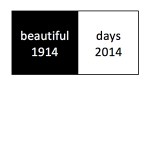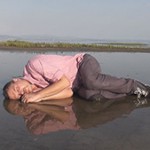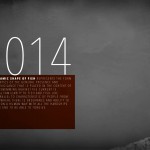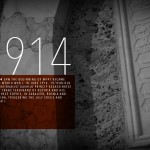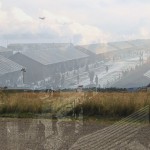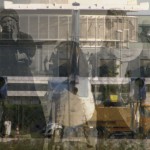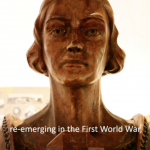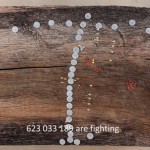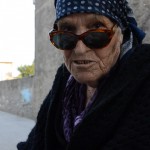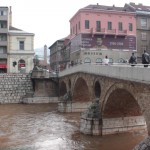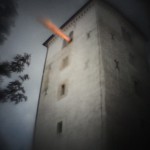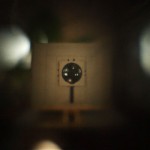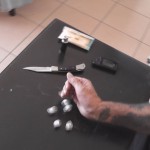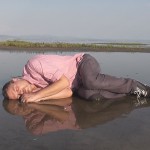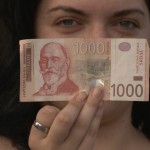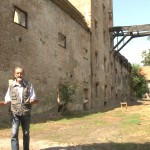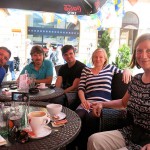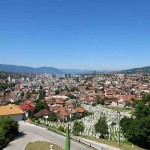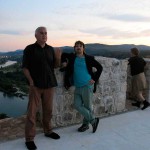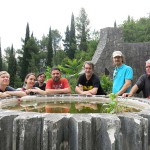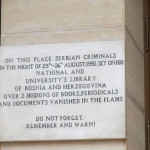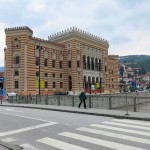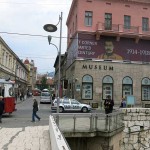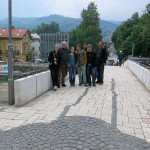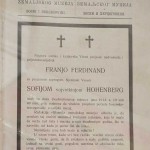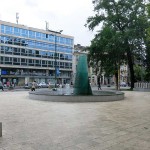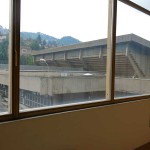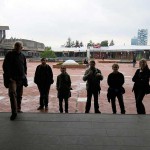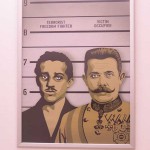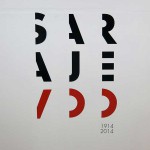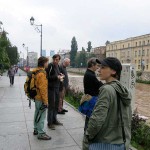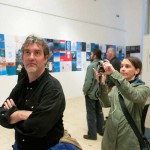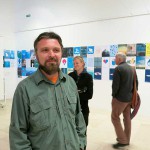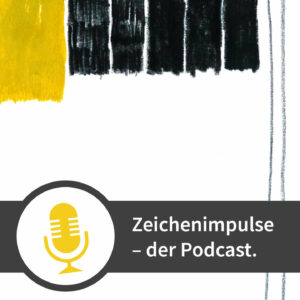Beautiful Days 1914/2014
 Schedule for presentations of the film „Beautiful Days 1914/2014“
Schedule for presentations of the film „Beautiful Days 1914/2014“
1
19th of November 2014, 19h, Museum of Contemporary Art Vojvodina, Novi Sad
Presentation of the film in the framework of the international exhibition, with the title ‚Memory of the Violence and Dreams about the Future‘, which will be held in Museum of Contemporary Art Vojvodina, in Novi Sad.
2
23rd of November 2014, 18 h, Graz, Rechbauerkino
after the film there will be a panel discussion with all artists
 3
3
27th of November 2014, 18 Uhr, HDLU, Zagreb
after the film there will be a panel discussion with all artists
http://www.hdlu.hr/2014/11/pozivamo-vas-na-prikazivanje-filma-beautiful-days-1914-2014/
4
Sarajevo – first week of December
date will be announced
5
13th of January 2015, 21 h, Künstlerhaus Kino, Vienna
after the film there will be a panel discussion with all artists
6
28. January 2015, 19 Uhr, Akademie der Bildenden Künste, Sarajevo
after the film there will be a panel discussion with all artists
7
3. April 2015, 19 Uhr, KIBLA PORTAL, Maribor
in connection with the exhibition “Dreams of Violence – Dreams of Future”
8
26. May 2015, 19 Uhr, Stazione Rogers, Trieste
Unterrichtsmaterial
Der Film “Beautiful Days 1914/2014” wird inzwischen als Unterrichtsmaterial von den Universitäten Graz und Wien, jeweils am Department für Geschichte sowie von der Filmakademie Wien verwendet.
Trailer
BEAUTIFUL DAYS 1914 / 2014
Euphoria, Transplantation, Breakdown
Poverty and Fear back then and today
Supported by: Land Steiermark, Kultur, Europa, Außenbeziehungen
CONCEPT
Beginning with the literary descriptions from Karl Kraus „Die letzten Tage der Menschheit“ and the novels from Ivo Andric „The Bridge over the Drna“ and „The young Lady“ („Das Fräulein“) the participating artists are working with the opposite poles of those days in 1914 which are relevant until today:
The multicultural concept of the monarchy vs. nationalstates on one hand and the subjective memories of our parents, grandparents and great grandparents about the circumstances concerning the everyday life in those days on the other hand.
Ivo Andric`s literature is a type of a yugoslawian kenotaph, who is mostly ignored in the today`s Ex-Yugoslawia. Karl Kraus wrote about the society of 1914. In his drama „Die letzten Tage der Menschheit“ he designed a monumental panorama of time, which tried to express grotesque sceneries, the absurdity and inhumanity of the war scenery.
James Joyce was fascinated by the multicultural atmosphere in Trieste, he spent several years of his life in this city and he run a movie theatre. Because of the war he moved away and when he came back after the war he found a total different city. There was no more the multicultural open atmosphere. He loved the diversity and the richness of languages, especially dialects, where he could create many new words in his own literature.
Sarajewo was a popular place in the monarchy where people travelled in order to experience the “Orient”.
„The year 1914 started with „beautiful days“, like Arthur Schnitzler wrote in his diary. Alma Mahler made a new interior design for her house in the area of Semmering. King Wilhelm II. went on a yacht trip to the Northern Islands. Emperor Franz Joseph went for his yearly summer vacation to Bad Ischl. The Serbian General went for his wellness to Bad Gleichenberg. Baron Rothschild didn`t see any reason to rearrange his financial business“ (Gerhard Jelinek, 2013).
Some details about this time in Styria:The local situation in Styria was marked by poverty.
- The local situation in Styria was marked by poverty.
- There were founded the first concentration camps for the Ruthenen and
- Ukrains in Feldbach, Thalerhof, Fohnsdorf.
- Factories for weapons in Eisenerz, Judenburg, Kapfenberg
- Bad organized food supply all over the country and follow up revolutions
- Appearance of new political movements like new associations for workers, soldiers, homeland security
- Finally the collapse of the southern part of Styria and the delocation from the later Austria
The situation in those days for the mass of the people (for sure in Austria) was the incredible poverty. The First World War killed 10 millions of people and even the same amount were severely wounded and crippled. The publication of the monstrosity of the human being in and through the war is terribly actual – like in lots of other wars in the 20th century until the youngest history. The participating artists are going to research and to work with the invisible levels of 1914 in the
contemporary context.
Objectives
The participating artists are working on the basis of the literature of Ivo Andric and Karl Kraus and create a relevant concept for the topics concerning history and presence. Images, language and social conditions will be interesting. The cities of Sarajevo, Zagreb, Trieste and Graz/Styria will be shown in the artistic work.
Artistic results
Film
Several presentations
Artists in residence in Sarajewo, June 2014
COOPERATION – Partners
Next – Verein für zeitgenössische Kunst Graz, project leader
ULUBIH, Bosnian Artists Association, Sarajewo
HDLU, Croatian Artists Association, Zagreb
ARTISTS
Artists BiH: Admir Mujkic, Sanjin Fazlic
Artists HR: Josip Zanki, Igor Juran
Artists Serbia: Arion Asllani
Artists Trieste: Davide Skerlj
Artists Austria: Lotte Schreiber, Lea Titz
Project leader: Luise Kloos
Artistic goal
All invited artists will create create a video in the length of 5 – 7 minutes.
Artists are free to create there own concept in the framework of the subject.
The final result will be shown in Sarajewo, Belgrade, Zagreb, Trieste and Graz.
Beautiful Days 1914/2014
Film 71 min, engl. subtitles
next – Verein für zeitgenössische Kunst, Graz 2014
This film was produced within the commemoration year 2014 and deals with the issue of the breakdown of the Danube Monarchy in a wider sense. The collapse of the multiethnic state in the context of WWI as well as the developments of contemporary issues through the use of analytical tools of contemporary art was the base to produce this film. 8 artists from Bosnia i Hercegovina, Serbia, Croatia, Italy and Austria did the research on the invisible levels of 1914 in their own environment.
1
Lea Titz
Vienna/Graz – AUSTRIA
Lea Titz used excerpts from the war diary of 11-year old Franz Tauschmann, Altenmarkt, Styria (1914-1918) for “Nails, Heads and Numbers”.
Schoolchildren who had participated in collecting warm clothes for the soldiers, or had otherwise selflessly supported voluntary war aid, were thanked by order of His Imperial and Royal Apostolic Majesty the Emperor for their patriotic services.
2
Josip Zanki
Zadar – CROATIA
Josip Zanki used in “Book of Memories” elements of his own family history. He researched the multicultural concept of the Monarchy and the politics of memory through historical sites in Zadar, Sarajevo and Trieste. The family story was transfomed by the world history.
3
Davide Skerlj
Trieste – ITALY
Characters of Ivo Andric’s novel „The Bridge on the Drina“: the old man Novak and the young man Gurcij. But there is also a new element in the video project, the element of water. Water interacts with both characters in the video, and the idea of this interaction was born during a journey to Sarajevo and its environs, after seeing these words written on a wall: Al- Enbya : 30
„We made every life living thing from water“
4
Igor Juran
Zagreb / CROATIA
“YESTERDAY AFTER…”
For the purpose of shooting, a special extension for the video camera was made. It is a reconstruction of a large-format photo camera, the kind that was used until 1914. All the shot objects date back to the time of the Austro-Hungarian Empire.
5
Arion Asllani
Belgrade – SERBIA
Great people die twice
The film opens the ground for discussion on the topic of the Austro-Hungarian heritage in the former Yugoslavia, as well as the ratio of the inhabitants of Belgrade and Pancevo, to the man Djordje Weifert who left a significant mark in their cities, throughout the history.
6
Lotte Schreiber
Vienna/Mürzzuschlag – AUSTRIA
“tracing THALERHOF” is about the historical meaning of the airport Thalerhof near Graz during WWI. In the years 1914-1917 there was an imperial detention center. Quiet shots from the every day activities at the airport are combined with archive photos and texts during the time of the camp.
7
Admir Mujkic, Sanjin Fazlic
Sarajevo – BOSNIA I HERCEGOVINA
The animation of fish from Bosnian artists Admir Mujkic and Sanjin Fazlic will be an integral part in a background of live footage. Swimming against the current is an existential familiarity of fish and fish-like. This parallel is characteristic for people from this area where there are endurance like a Perpetuum and the ability to take deal on a human way with all the hardships and at the end to be able to forgive.
